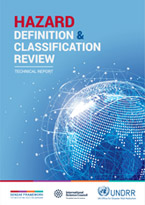 UN Office for Disaster Risk Reduction
UN Office for Disaster Risk Reduction
Sinopse: Whilst observing the complex yet fascinating negotiations for the Sendai Framework for Disaster Risk Reduction 2015–2030 as a member and then vice-chair of the United Nations International Strategy for Disaster Reduction (UNISDR) Scientific and Technological Advisory Group from 2011 to 2015 and where asked, supporting the UN Member States negotiators on scientific issues of all kinds, it was apparent that some paragraphs of the Framework would require more explanation. Thus, the reference to ‘all hazards’ identified in ‘Priority 1 Understanding Disaster Risk’ resulted in the need to ask the question:
What does ‘all hazards’ mean?
To strengthen technical and scientific capacity to capitalize on and consolidate existing knowledge and to develop and apply methodologies and models to assess disaster risks, vulnerabilities and exposure to all hazards (Sendai Framework, §24j)
Following further meetings in later years it became more apparent that ‘all hazards’ was not clarified even through the Integrated Research on Disaster Risk (IRDR) Peril Classification and Hazard Glossary published in 2014 and the excellent work of the Openended Intergovernmental Expert Working Group (OIEWG) on indicators and terminology relating to disaster risk reduction. According to the OIEWG’s report, published in 2016 and adopted by the UN General Assembly in 2017, a hazard is defined as: A process, phenomenon or human activity that may cause loss of life, injury or other health impacts, property damage, social and economic disruption or environmental degradation.
